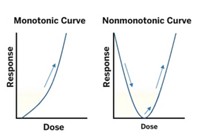Advertisement
Grab your lab coat. Let's get started
Welcome!
Welcome!
Create an account below to get 6 C&EN articles per month, receive newsletters and more - all free.
It seems this is your first time logging in online. Please enter the following information to continue.
As an ACS member you automatically get access to this site. All we need is few more details to create your reading experience.
Not you? Sign in with a different account.
Not you? Sign in with a different account.
ERROR 1
ERROR 1
ERROR 2
ERROR 2
ERROR 2
ERROR 2
ERROR 2
Password and Confirm password must match.
If you have an ACS member number, please enter it here so we can link this account to your membership. (optional)
ERROR 2
ACS values your privacy. By submitting your information, you are gaining access to C&EN and subscribing to our weekly newsletter. We use the information you provide to make your reading experience better, and we will never sell your data to third party members.
Environment
Reducing Lead Levels
Draft government report links low-level lead exposure to negative health effects
by Britt E. Erickson
October 24, 2011
| A version of this story appeared in
Volume 89, Issue 43
Blood lead concentrations less than the federally established level of concern are associated with adverse health effects, a draft assessment by the National Toxicology Program concludes. Once finalized, the NTP assessment could prompt the federal government to lower lead exposure limits for workers as well as the blood lead level it considers to be elevated.
Released on Oct. 14, the draft report finds sufficient evidence to associate blood lead concentrations lower than 5 μg/deciliter with decreased academic performance and cognitive function, and “increased incidence of attention deficit hyperactivity disorder and problem behaviors” in children. The report also finds sufficient evidence to associate blood lead levels below 10 μg/dL with delayed puberty, reduced growth, decreased IQ, and decreased hearing in children, as well as increased blood pressure and cardiovascular disease in adults.
The current blood lead level of concern, set by the Centers for Disease Control & Prevention, is 10 μg/dL. Prior to 1991 the level was 25 μg/dL, and before 1985 it was 30 μg/dL. Observers predict that if NTP’s preliminary conclusions make it into the final report, CDC will be under pressure to lower the level again. The National Institute for Occupational Safety & Health, which requested the evaluation, will consider the final conclusions as it reviews recommended lead exposure limits for workers, according to a NIOSH spokesman.
A peer review panel is scheduled to evaluate the draft report at a public meeting next month in North Carolina. NTP is also accepting public written comments until Nov. 3.




Join the conversation
Contact the reporter
Submit a Letter to the Editor for publication
Engage with us on Twitter